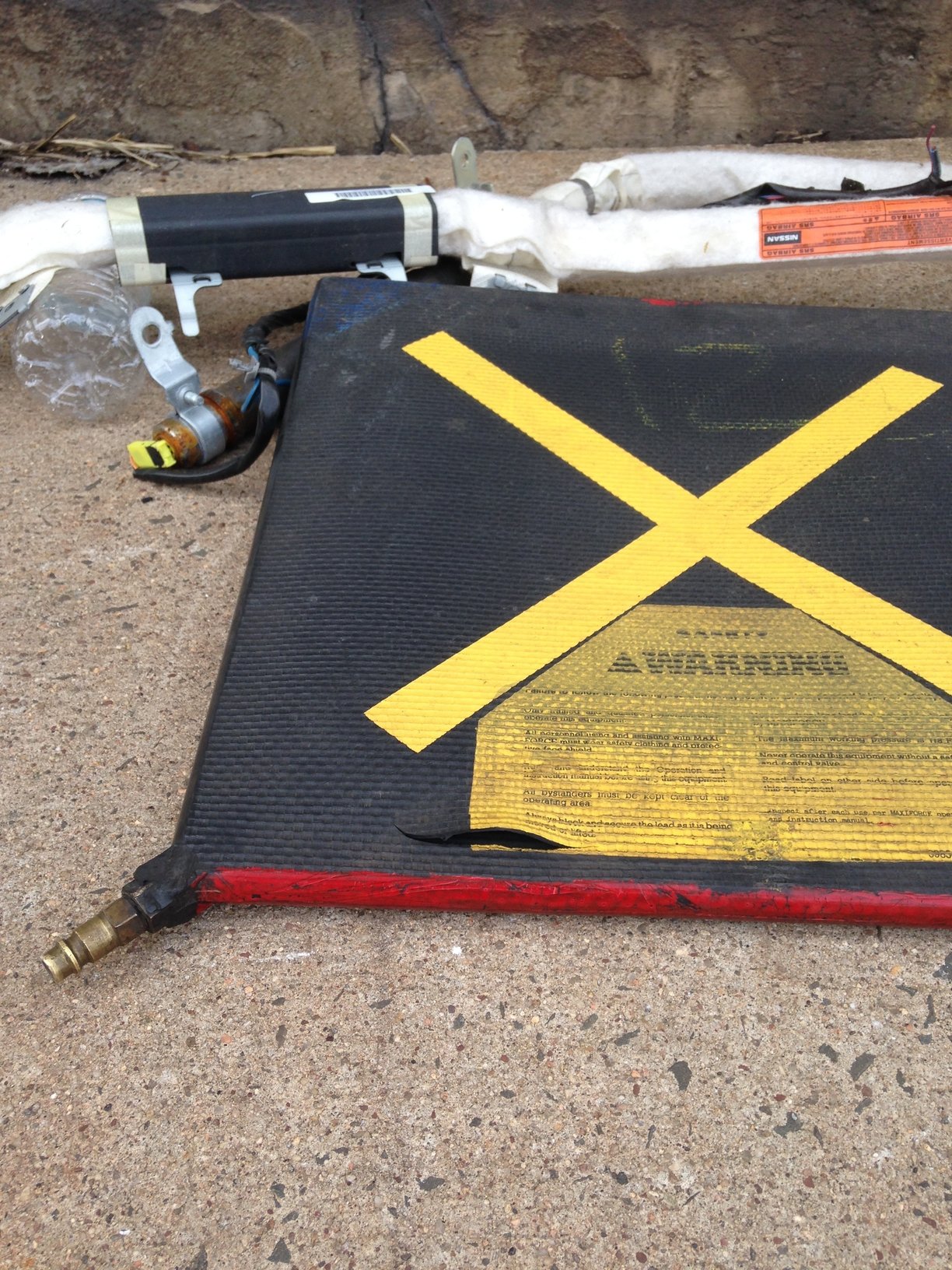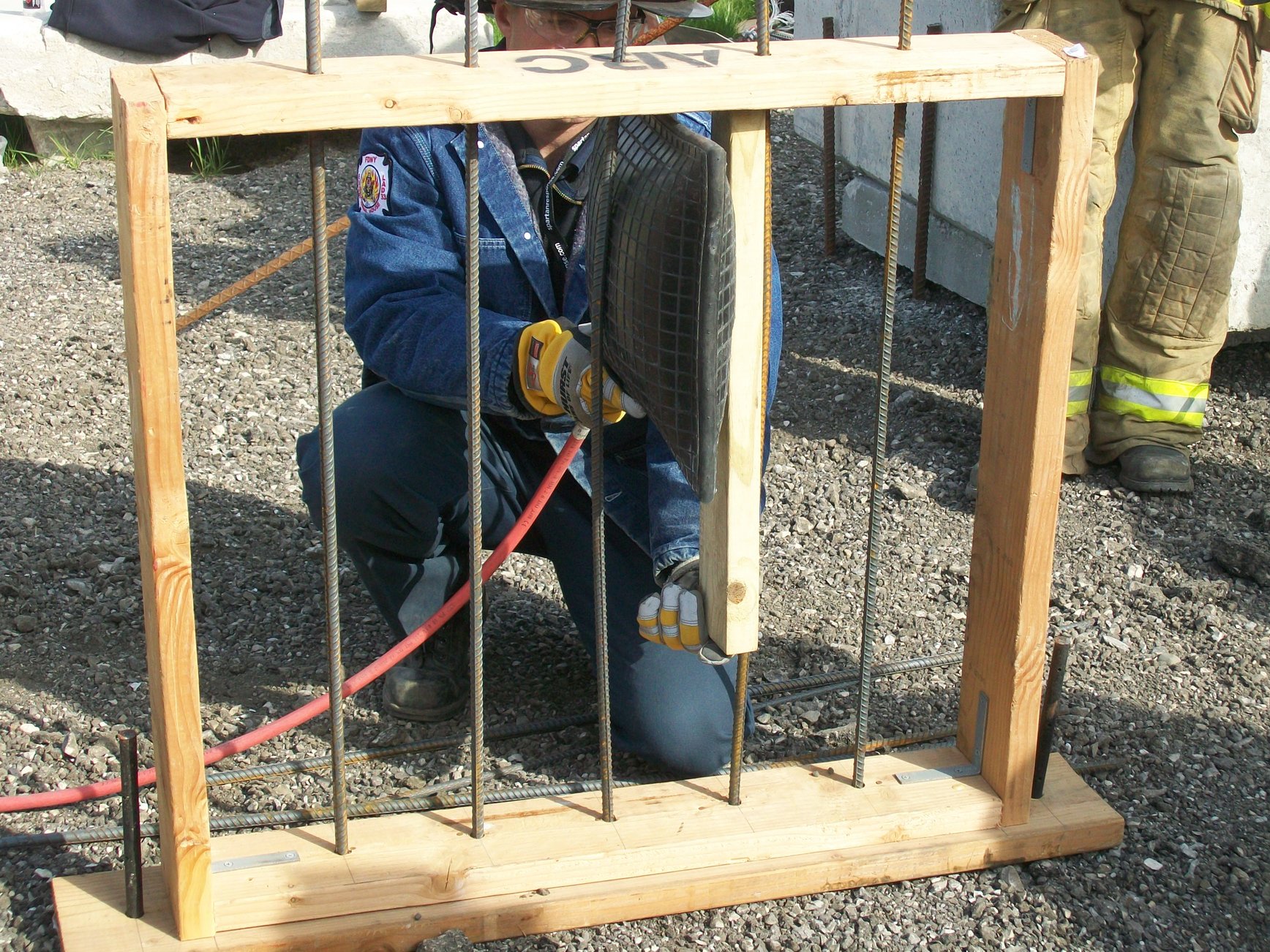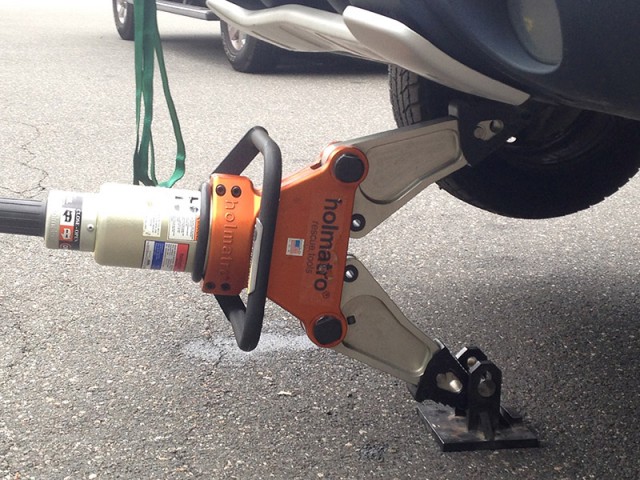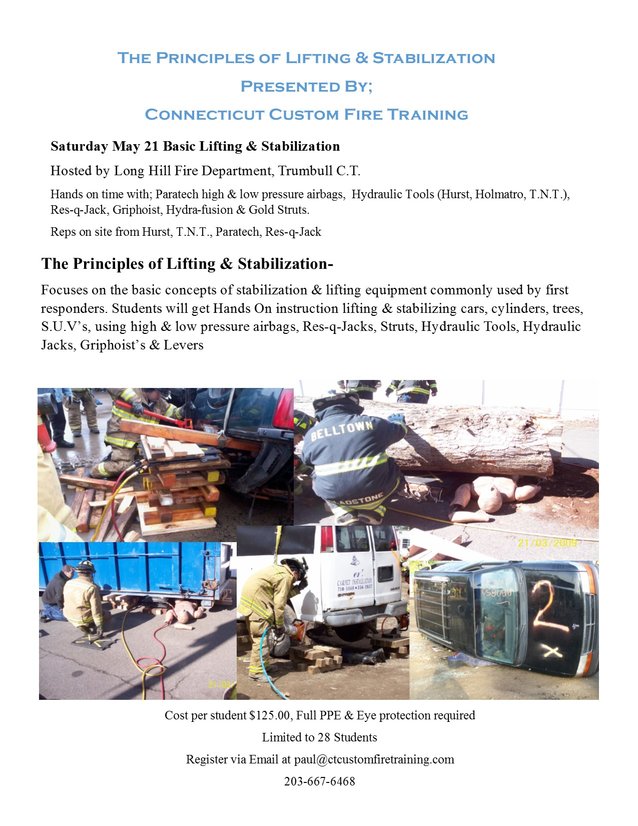Connecticut Custom Fire Training
For many years there has been longstanding controversy regarding the use of the hydraulic spreader vertically as a jack to lift a vehicle in order to free a victim trapped beneath. Much of the negativity stems from the now infamous YouTube video where a vehicle shifts during lift and is dropped onto a victim beneath a car. I'm not going to dissect that video and point out the myriad of things not done to prevent this from occurring. What I am going to say is that when done correctly in conjunction with proper stabilization & load capture this can be a very quick & effective way to lift a vehicle. Many of the major H.R.T. manufacturers will go on the record stating they do not endorse this technique because the tool "was not designed to be used that way" My contention to them is that it is no different than jacking the dash during a modified dash lift. The tool is used in the same vertical plane during both maneuvers.
The main issue with using a hydraulic spreader to lift is limited contact surface area. The widest tips on the market are just over 2 inches wide. This limits contact to the load, as well as the ground to a very small area. In fact, as the load begins to raise and the tool opens up the contact surface begins to lessen making things less stabil. In analyzing this we sought to devise a way to increase both contact surface area & lateral support in order to improve overall stability when conducting a lift in this manner. After much testing & great deal of trial and error we have developed a product to use in conjunction with your H.R.T. and proper cribbing to perform this lift with a great deal of stability.
Behold the TL-9 stabilization device. The TL-9 is made from half inch solid steel, with a 6 x 6 base plate, and 4 1/2 inch gusseted towers spaced approximately 2 inches apart. The solid base plate increases the contact surface area with the ground while the towers provide lateral support for the tool. In addition, there is a solid steel traveling limit pin between the towers that prevents the spreaders from opening beyond 70%. At 70%, lift heights have ranged between 19-30 inches depending on the H.R.T. unit. When the traveling pin reaches the tops of the towers it locks the lower tip of the spreader into a groove at the front of the plate which works to increase overall stability.
The TL-9 is in the production process and should be available by mid to late September. There will be 3 stock models produced to accommodate the vast majority of commercially available spreaders. Each stock model will have slight variances in the width between the towers to account for different spreader tip widths. Each model will allow for only a 1/8 inch of clearance when the tips are inserted to achieve maximum lateral stabilization. Custom models can be produced to fit a specific spreader with bulk orders in excess of 10 units where tolerances can be set to within a sixteenth of an inch.
Having a good working knowledge regarding some of the key structural components in modern day vehicles can go a long way to improving your extrication skills. One such component you should be aware of and use to your advantage is the center dash bar found in virtually all automobiles produced after the year 2000. The center dash bar, (aka) central dash support, is a key component of the dash support structure, which runs accross the dash area of the car from "A post" to "A post". Understanding what the "Dash Bar" is, and most importantly where it is will significantly further your capabilities in terms of displacing the dash of a car that is impinged upon your victims lower extremities. The central dash displacement is a technique used to hyper-extend the dash of an automobile by pushing off the dash bar with your hydraulic spreader or ram. By placing the base of your ram, or the lower arm of your spreader on the transmission hump or floor board, and the upper portion of the unit on the dash bar you can raise the dash significantly without making any relief cuts. Finding the dash bar can be tricky at first as it is hidden by the standard components of the dash board (radio, temperature controls, vents, etc.) Once these components are removed, or destroyed by the hydraulic tools the dash bar will be visible, and displacement can commence. You will be amazed by the amount of space you create using this technique.
The high pressure airbag pictured below experienced a blow out while under pressure, & under load. Airbag failures are extremely rare. In fact, in more than 20 years in the fire service, today was the first time I ever experienced one. Airbags are susceptible to other types of failures as well. They can be easily punctured or torn by jagged or sharp metal such as screws or bolts typically found under vehicles. They will burn through when exposed to heat in excess of 220 degrees. In order to prevent these types of failures we should be protecting our airbags by placing a wood or neoprene pad on top of the bag, in between the bag & the load. The blow out experienced by the bag pictured here was a result of age. Older bags, such as this one, are subject to dry rotting when they are not routinely exercised. Airbags have a recommended shelf life of 10-12 years. Over time the butyl rubber begins to degrade, becomes less pliable, and begins to dry rot. To avoid this situation, exercise your bags regularly under load, keep them clean & dry, and insure that they have not exceeded their service life.
An emergency response more common than some might think is the run for a person or animal stuck between iron bars. Typically it involves an unknowing child or an overserved adult who has lodged their head or neck between the bars of a wrought iron fence or gate. Our options for removal are many, but our main concern should be focused on the least invasive means possible especially when dealing with children. A simple, and minimally invasive technique is to use the high pressure airbags to perform a horizontal displacement. The airbags are quick & quiet, and don't create any sparks or vibrations. Simply place the appropriately sized bag with any necessary cribbing above or below the patients head and inflate the bag to displace the bars.









 a
a m
m